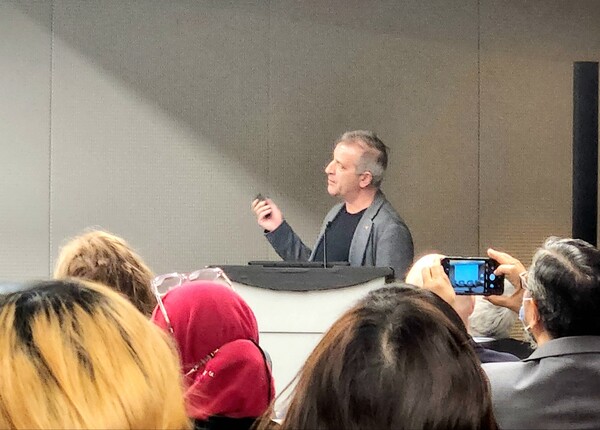AI-backed, low-cost protein nanoparticle vaccines can seamlessly display proteins on the antigen surface to enhance immune responses, compared to their predecessor, said a vaccine expert at a global vaccine forum on Wednesday.

Harry Kleanthous, executive vice president of vaccines at SK Bioscience, admitted that the platform was not as fast as the mRNA platform.
However, he noted transitioning from gene sequencing to emergency use listing in just 30 months with a protein-based vaccine like its SKY Covione Covid-19 vaccine was remarkable.
SK’s vaccine used a two-component nanoparticle comprising a receptor binding domain (RBD) protein which showed good humoral and T cell responses, even showing protection in upper airway tracts due to the high titers, Kleanthous explained.
“With recent advances in synthetic nanoparticles, adjuvants are not always required like Icosovax’s RSV vaccine candidate,” he said. “HPV vaccines made with this platform have also shown longer protective responses to enable longer vaccination schedules.”
The protein nanoparticle platform’s compatibility is also being tested as a booster with other vaccine platforms and being investigated in mucosal vaccines, he said, highlighting the potential of the platform.
Switching gears, Lynda Stuart, vice president of infectious diseases at BioNTech spoke about the newcomer, nucleic acid vaccines, better known as mRNA vaccines.
Moderna and BioNTech widely popularized mRNA vaccines by successfully commercializing the Covid-19 vaccine.
She elaborated on programs for researchers to collaborate with multinational pharmas’ mRNA technologies at the R&D stage to sidestep the intellectual property (IP) waiver issue which some consider a barrier to regional vaccine manufacturing.
“Discussions on IP waivers need to be shifted to co-development of IPs with regions that are affected the most,” Stuart remarked. “If this is done at the discovery and development stage, then co-ownership can change the discourse around the IP waivers.”
On the note of regional manufacturing, she highlighted Quantoom Biosciences, a company that was selected as a technology provider for the mRNA hubs in Africa. It deploys a novel, de-risked, fast and cost-efficient approach to mRNA manufacturing by using fewer reagents and higher-quality drug substances to create a low-footprint facility.
It operates on a container-based clean room concept beginning with in vitro translation to generate the RNA and premixed reagents for guaranteed quality, requiring no scale-up.
Meanwhile, N3J Consulting CEO, Nathalie Garcon, presented the case of combining vaccine adjuvant molecules to facilitate pan protection and increase the breadth of the response across different virus variants. Consequently, the humoral responses can be improved by adding exogenous adjuvants and increasing antigen-presenting cells (APC) in liquid nanoparticles (LNPs) used in mRNA vaccines, she said.
Related articles
- [GVIRF 2023] 'Vaccines should be deployed in 6 months in a new pandemic'
- Moderna, KmVAC to develop mRNA vaccines for emerging infectious diseases
- Sanofi adds mRNA 2.0 to its vaccine toolkit
- [Vaccine Innovation] Advancing personalized mRNA cancer vaccines
- [GVIRF 2023] KDCA unveils preview into Korea’s future pandemic response strategy
- [GVIRF 2023] WHO, CEPI, AVMI say establishing regional manufacturing easy but sustaining it difficult
- [GVIRF 2023] The year 2023 is for RSV vaccines, says Johns Hopkins expert

